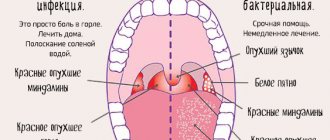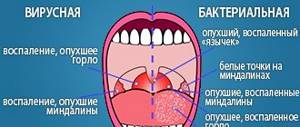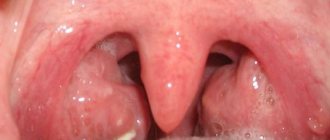Treatment with antibiotics in our country, unfortunately, is not only a matter for doctors. The Internet is replete with queries: “What antibiotics to take for a sore throat?”, “Should I take antibiotics for a cold?”, “What to choose - antibiotic tablets or injections?” Dr. Anton Rodionov, in his book about medications, talks in detail about the acceptable use of antibiotics for bronchitis, sinusitis and other respiratory diseases - and only as prescribed by a doctor!
Antibiotic translated from Greek means “against life.” On the one hand, these are drugs that, perhaps, saved a record number of lives on earth; in any case, the widespread introduction of antibiotics into clinical practice in the second half of the 20th century made it possible to radically change the structure of morbidity and mortality, displacing infectious pathology from the first positions. On the other hand, this is a group of drugs in the prescription of which a record number of errors occur.
I usually started my lectures on antibiotics with data that was presented back in 2001 by the legendary professor L.S. Strachunsky is a leading figure in Russian antibiotic therapy. So, when analyzing outpatient records in children's clinics, it turned out that about 90% of antibiotics were prescribed not according to indications. More than half of the prescriptions were for ARVI (and you know very well that antibiotics for ARVI are not prescribed for either treatment or prevention). I don’t think that statistics have changed radically in 15 years.
In the second slide I show 4 general principles of antibiotic treatment. They are formulated for doctors and represent the 4 most common mistakes. However, I am sure they will be useful to you too. So:
- There is no need to prescribe antibiotics if they can be avoided. This is the most important rule
- There is no need to “expand” the spectrum of action of the antibiotic unnecessarily. When you are sick, you really want a stronger medicine so that it will kill everything for sure. So there’s no need to be “stronger”. If an antibiotic is really needed, then it should not “burn out all living things, leaving behind a desert,” but act in a targeted manner, taking into account the sensitivity of the pathogen. For example, oddly enough, classical streptococcal infection, just like 60 years ago, can still be perfectly treated with simple penicillins.
- There is no need to prescribe antibiotics intravenously or intramuscularly if they can be prescribed in tablets.
- There is no need to routinely prescribe antifungal drugs with a short course of antibiotics - 5-7 days. It's useless at best.
Antibiotics throughout the world are strictly prescription drugs. Do not self-diagnose or self-medicate. I present here standard generally accepted approaches to treatment, but, of course, the characteristics of your particular disease may become the basis for prescribing a different therapy. In addition, allergies and other types of individual intolerance are possible. Pay more attention to what not to do. Let your doctor take care of how to do it.
Common mistakes when treating respiratory tract infections with antibiotics
- The use of antibiotics by injection in an outpatient (home) setting. All of these drugs, and many others, exist in tablet form.
- Use of co-trimoxazole (Biseptol). This is a very unsafe medicine with a narrow spectrum of use. For some reason, they really like to use it for self-medication, considering it the safest antibiotic. This is absolutely not true.
- To prefer co-trimoxazole to other antibiotics, there must be very serious reasons. It is advisable to conduct short (no more than 5-7 days) courses of therapy.
- Co-trimoxazole is used for specific diseases, for example, Pneumocystis pneumonia in HIV-infected people and for the treatment of certain forms of nosocomial infections with insensitivity to other antibiotics.
- The use of co-trimoxazole requires careful monitoring of side effects, the underestimation of which can lead to death. For example, the risk of a severe toxic reaction (Lyell's syndrome) when prescribing this drug is 10-20 times higher than when using conventional antibiotics.
- Routine use of antifungal drugs. You don't have to do this.
- Late initiation of antibiotic therapy for pneumonia. Unfortunately, people die from pneumonia even in the 21st century. The later treatment begins, the higher the mortality rate - such a disappointing statistic.
- Frequent changes of antibiotics during treatment, which are explained by the “danger of developing resistance.” There is a general rule of antibiotic therapy: effectiveness is assessed within 48-72 hours. If during this time the temperature normalizes and the symptoms decrease, then the drug is effective, and its use is continued for as long as the course of treatment is designed for. If the temperature persists, the antibiotic is considered ineffective and is replaced with a drug from another group.
- Too long or too short, incl. independently interrupted course of treatment. We must understand that we are treating a disease, not tests or x-ray changes. For example, after suffering from pneumonia, changes on an x-ray can last up to a month, and sometimes longer. This does not mean at all that you need to swallow antibiotics all this time. However, there is also no need to stop treatment on your own on the first day of normal temperature - this is a sure way to ensure that the antibiotic will not work next time.
", and then treat him. The notorious “stool test for dysbacteriosis” is obscurantism, widespread on a national scale. Several thousand microbes live in the intestines, the laboratory identifies only two dozen, and not at all those that are on the walls of the intestines, but those that move with feces. If your doctor suggests you take this test, think seriously...
In reality, the problem is a condition called antibiotic-associated diarrhea.
, i.e. diarrhea that develops as a result of taking antibiotics. The mechanisms of its development can be different; not everything comes down to a violation of the composition of the microflora. For example, macrolides, as well as clavulanate, cause diarrhea by increasing intestinal motility. There is no need to treat such antibiotic-associated diarrhea; it stops on its own a couple of days after stopping the drug.
The main problem is diarrhea associated with the colonization of a microorganism called clostridium (Clostridium dii cile). In this case, despite stopping antibiotic therapy, stool frequency increases and severe dehydration develops. Possible complications include ulceration and perforation of the colon and death.
Based on this, let's formulate the following rule: if after stopping the antibiotic, diarrhea not only does not go away, but, on the contrary, the condition worsens, you need to consult a doctor and have a stool test done to determine the Clostridium dii cile toxin. If the diagnosis is confirmed, treatment with other antibiotics (metronidazole and vancomycin) is prescribed.
Most often, tonsillitis becomes chronic, while angina is more characterized by an acute form.
Antibacterial agents are used in the treatment of both diseases, but acute purulent inflammation cannot be cured without antibiotics. And the course of tonsillitis can be stopped by other means.
More attention is paid to biostimulants and vitamins in the treatment of chronic tonsillitis. It is advisable to use therapeutic measures and physical procedures in treatment while staying in sanatoriums and resorts. It is important to pay attention to general strengthening procedures.
Why does a sore throat not go away after antibiotics and what should the patient do?
Sore throat after antibiotics occurs again (or does not go away at all) in several cases:
- The causative agent of the disease is resistant to the antibiotic. This is a normal situation when taking drugs of the penicillin group, more rare for cephalosporins and macrolides. In this case, the sore throat does not go away after antibiotics at all, and the patient does not feel relief;
- The diagnosis was made incorrectly and an exacerbation of chronic tonsillitis was mistaken for a sore throat. Sometimes patients even call tonsillitis itself with plugs in the tonsils a sore throat;
- Again, an error in diagnosing the disease and an attempt to treat fungal or viral tonsillitis or pharyngitis with antibiotics. Antibiotics do not act on fungi or viruses, and such a “sore throat” will not go away with their use;
- Violation of the rules for the use of antibiotics. For example, if the patient stopped taking them on the third day of treatment, when he felt better, a re-exacerbation of the disease or the development of chronic tonsillitis is likely. In this case, repeated sore throat after antibiotics may develop after several weeks or months, in extremely rare cases - after several days;
- Re-infection soon after treatment. A very rare, almost exceptional case.
It is important to understand that if, with a sore throat, the temperature simply does not subside after antibiotics, but the patient’s general condition returns to normal, this is not a cause for concern.
The temperature in many cases remains high not so much because of the activity of the pathogen, but because of the presence in the tissues and blood of a large number of bacterial cell residues and toxins.
It is normal if the temperature remains elevated for a week when using effective antibiotics, but it should drop to subfebrile values (37-38°C), and the patient’s general condition should normalize. If antibiotics do not help with a sore throat, the patient will not get better.
A patient with tonsillitis has a normal body temperature 1-2 days after starting antibiotics.
In general, if all the rules of antibiotic therapy for angina are followed, situations should not arise when antibiotics do not help. These cases occur due to the fact that the doctor prescribes the drug without identifying the pathogen and its resistance to various drugs, or due to errors in diagnosis, or when the rules for taking the drug are violated.
Staphylococcus is a bacterium that is very often resistant to many antibiotics, including penicillins.
How to determine the specific reason why a sore throat does not go away after antibiotics or occurs again, and what to do in a particular case?
Pathogen resistance to antibiotics
In this case, both situations are possible:
- The disease does not go away after antibiotic therapy;
- The disease passes, but soon a re-exacerbation of tonsillitis develops. The primary or previous exacerbation ends, since this is normal for sore throat (it cannot be chronic), and the next one develops against the background of weakened immunity, accidental re-infection and other reasons.
But in general, the insensitivity of the angina pathogen to the antibiotic is manifested precisely by the absence of any effect from taking the drug.
Staphylococcus surrounded by metabolic products. Among them are enzymes that break down and deactivate penicillins.
Reasons for pathogen resistance to antibiotics:
- The initial resistance of the strain of bacteria that infected the patient;
- Violation of the rules of antibiotic therapy: local use of systemic drugs (for example, instilling antibiotics into the nose for a runny nose, gargling with them);
- The use of medications with which this patient’s sore throat has already been treated before and the treatment did not produce results.
The last case, by the way, is a flagrant violation of the rules of antibiotic therapy, which doctors sometimes allow. There are known situations when a doctor, in the old fashioned way, prescribes penicillin injections to a patient with a sore throat, not paying attention to the fact that the same patient’s disease has already been treated several times with such injections, which in a particular case do not help.
How is it determined?
First of all, by the absence of changes in the patient’s condition, sometimes by its deterioration. In medical practice, it is generally accepted that if noticeable changes do not occur within 48 hours after the start of use, the antibiotic should be replaced, or the diagnosis should be rechecked.
Benzylpenicillin sodium salt is an outdated antibiotic that is ineffective in every fourth case.
What should the patient do?
Visit a doctor. If he doesn’t change the antibiotic, doesn’t take a throat swab for analysis to determine the sensitivity of bacteria to drugs, but simply says that you need to wait - go to another doctor. After changing the drug and adjusting the treatment, the patient must strictly adhere to the doctor’s instructions for taking the drug.
Error in diagnosis and treatment of chronic tonsillitis
This situation is characterized by repeated exacerbations of the disease after antibiotic therapy. Symptomatically and clinically, they resemble sore throats, but a specialist can distinguish them by individual signs. Exacerbations of chronic tonsillitis are usually milder and faster than sore throats, and therefore, regardless of antibacterial therapy, the patient quickly feels relief.
Also, sometimes patients consider chronic tonsillitis itself to be a sore throat. In this case, it is also likely that antibiotics do not affect the course of the disease or the appearance of the tonsils.
Typical appearance of tonsils in chronic tonsillitis. The stones are clearly visible.
It is important to understand that chronic tonsillitis can also be treated with antibiotics. But in addition, it is important to wash the lacunae of the tonsils, strengthen the immune system, and eliminate factors that contribute to the exacerbation of the disease.
Washing tonsil lacunae in the clinic
Causes of diagnostic errors:
- The similarity of the manifestations of exacerbation of tonsillitis and tonsillitis;
- The patient’s refusal to tell the doctor his medical history, or the doctor’s reluctance to deal with this issue.
How is it determined?
As a rule, if repeated sore throat after antibiotic therapy occurs constantly and at short intervals - a week, two weeks, a month - we are talking about chronic tonsillitis. Normally, this disease does not occur more often than once a year.
In addition, if a patient constantly has yellow plugs on his tonsils (which are often confused with festering follicles in follicular tonsillitis), and the tonsils themselves are always enlarged, this also indicates a chronic disease.
Plugs in the tonsils that turn into hard formations.
What should the patient do?
If the treatment of chronic tonsillitis with an antibiotic was prescribed by a doctor who confused the disease with a sore throat, you should find another doctor. Otherwise, there is a risk of treating the disease for several years, and in the end you will still have to undergo surgery and lose your tonsils. Such cases do occur.
If the patient himself diagnoses himself with a sore throat and decides to take antibiotics for it, stop playing doctor and turn to a good specialist. Otherwise, you can not only lose your tonsils, but also develop severe heart defects and chronic kidney disease.
Antibiotic treatment of viral and fungal diseases
This is one of the most common reasons why antibiotics do not help with sore throat.
Many patients at home diagnose themselves with the disease and believe that if their throat hurts and their temperature rises, it is a sore throat and it needs to be treated with antibiotics.
Moreover, in many cases, viral tonsillitis and pharyngitis, which are not affected by antibiotics, manifest themselves as similar symptoms.
Throat affected by Coxsackie virus
Also, many patients look into the throat, see white spots in the throat and decide that this is definitely a purulent sore throat, although we are talking about fungal pharyngitis. Antibiotics will not only not help with this, but may even worsen the situation.
How is it determined?
In many cases, only a doctor can distinguish viral and fungal diseases of the throat from a sore throat. Moreover, sometimes it is difficult even for a specialist to differentiate by external signs, for example, catarrhal tonsillitis from viral pharyngitis, or tonsillomycosis from lacunar tonsillitis. In general, the distinguishing features here are:
- Runny nose - it does not develop with a sore throat; with a viral disease it is normal. But there are exceptions;
- Spread of white spots beyond the tonsils - to the palate, palatine arches, base of the tongue. In this case, we are talking specifically about a fungal infection of the pharynx, since with angina, pus is localized only on the tonsils.
In addition, if a sore throat does not go away after antibiotics such as Augmentin, Amoxiclav, Flemoclav Solutab, erythromycin or azithromycin (not to mention the expensive drugs of the latest generation - Vilprafen, Timentin), we are talking about a viral or fungal disease. These antibacterial drugs for sore throat almost always work.
A fungus of the genus Candida, which only flourishes when taking antibiotics.
What should the patient do?
Stop self-diagnosis and self-medication and consult a doctor. If the disease is viral, symptomatic treatment is prescribed; if it is fungal, antifungal agents are taken. If a doctor prescribed an antibiotic, after two days of unsuccessful use of antibiotics, he must clarify the diagnosis and prescribe the correct treatment. If this does not happen, you should see another doctor.
Incorrect use of antibiotics
In many cases, gross violations of the rules of antibiotic therapy are also the cause of repeated exacerbations or the fact that a sore throat does not go away after antibiotics at all. For example:
- Stop taking antibiotics earlier than prescribed by your doctor. The minimum treatment period is 7 days, normal is 10-15. Azithromycin alone can be taken for 5 days, and sometimes for 3 days, but in the latter case the incidence of repeated exacerbations of the disease is high;
- Replacement of systemic antibiotics with local ones. Some patients believe that if they suck on lozenges or tablets with antibiotics during a sore throat, the result will be similar to taking these drugs systemically. In fact, when dissolving tablets or gargling with antibiotics, there is no effect on the infection, and the disease will definitely not go away with such treatment;
- Irregular use of antibiotics, or taking them in violation of instructions. For example, azithromycin, when taken simultaneously with food, is absorbed into the blood much worse and may not have an effect on the disease; bicillins should only be administered intramuscularly. Due to ignorance of these features, medications may not work as they should.
This situation is most typical for adult patients who are not properly treated, but buy an antibiotic as directed by a doctor and drink it when they accidentally remember it.
How is it determined?
Just from memory. If the patient does not remember the last time he took the drug, in what quantity, and what the doctor said about taking it, most likely there were violations of the rules of administration.
A container that reminds the owner of the time to take the pill.
What should the patient do?
Take the drug according to the instructions. If the situation does not improve, or the disease recurs, you need to go to the doctor for re-diagnosis (perhaps we are already talking about chronic tonsillitis) and adjustment of treatment.
Re-infection with sore throat
This situation is almost hypothetical.
After successful treatment of a sore throat, the body retains a fairly strong immunity, the number of immune system cells in the tonsils and antibodies in the blood remains high for a long time, and repeated exposure of the pathogen to the tonsils will not cause disease. In addition, the causative agent of sore throat itself needs to be picked up somewhere else. Exceptions are situations when the patient has an immunodeficiency, or constantly works with patients (for example, doctors, internship students).
Macrophages are cells of the immune system that specifically hunt and eat bacteria.
How is it determined?
This situation is quite typical: after taking antibiotics, the sore throat quickly ended, the patient recovered, and he had no signs of chronic tonsillitis. After some time, a typical sore throat developed. Again, this is what we are talking about here, and not about viral infections of the throat - they can develop after a successfully treated sore throat.
What should the patient do?
Treat sore throat again. Be sure to consult a doctor, since repeated use of antibiotics can provoke the development of a fungal disease. And in general, this situation is non-standard and the doctor must make sure that the recurrent illness is a sore throat.
Any problems in the treatment of sore throat should be addressed to a specialist.
Read further:
Source: https://AntiAngina.ru/angina/antibiotiki-pri-angine/angina-posle-antibiotikov.html
What to do if a sore throat does not go away after treatment
When the result of treatment for sore throat is not visible, it is necessary to contact specialists for additional examination. Only a thorough examination of biological material and bacterial culture can lead to the identification of the causative agent of the disease.
If the pathological condition is caused by a virus or fungus, then appropriate medications and physiotherapy are selected.
It is necessary to change the drug when the previous drug did not give a positive result when taken.
During the selection of therapeutic measures, not only the type of pathogen is taken into account, but also the patient’s condition and his or her tolerance to certain medications. Determine what level the patient’s defense system is at.
Treatment is prescribed based on laboratory tests. If signs of inflammation do not decrease after taking medications, then it is necessary to differentiate the disease from pathologies with similar symptoms.
Patients often notice an increase in sore throat from taking antibiotics, but do not know what is causing it. This condition is especially noticeable after prolonged treatment of sore throat and tonsillitis with antibacterial agents.
The reasons are incorrectly selected and ineffective drugs that cause individual sensitivity.
In the treatment of throat diseases, systemic medications (Erythromycin) and topical agents (Bioparox, Gramicidin) are prescribed. Medicines are important, but can cause fungal infection of the mucous membrane (candidiasis).
If a sore throat does not go away after treatment with antibiotics
If a sore throat does not go away after antibiotics, there may be several reasons for this. The first is that the causative agent of the disease is resistant to the drug, and no positive changes in the patient’s condition are observed during treatment. Most often, resistance of microorganisms is observed to drugs of the penicillin group (Penicillin, Ampicillin, Amoxicillin), cephalosporins (Cefalexin, Cefadroxil), and less often to macrolides (Azithromycin, Sumamed, Josamycin).
There have been no recorded cases of no reaction to Augmentin, Sultamicillin and Amoxiclav, therefore, if treatment with these medications does not produce results, most likely the diagnosis was incorrectly made, or the patient violated the rules for taking medications. Why pathogens may not respond to antibiotics:
- the initial resistance of the bacterium that caused the disease;
- improper use of antibiotics, such as gargling or putting them into the nose;
- a doctor prescribing medications that have already been used to treat a patient’s sore throat, but they did not give positive results.
The second reason why sore throat does not go away for a long time after antibiotics is their unjustified use. Many patients believe that a fever and sore throat are the first signs of bacterial tonsillitis, although it can be caused by a virus or fungus. Antibiotics will not only not help here, but will even worsen the situation, therefore, if a sore throat does not go away for a month, you should not engage in self-diagnosis and treatment.
The following signs will help distinguish viral and fungal sore throat from bacterial:
- runny nose - it is a companion to ARVI, but not to sore throat, although in rare cases there are exceptions;
- white spots not only on the tonsils, but on the base of the tongue and the arches of the soft palate are a sign of a fungal infection of the throat (with sore throat, purulent plugs form only on the surface of the tonsils and in the lacunae).
And the third reason why a sore throat does not go away after antibiotics is considered to be a violation of the rules of prescribed therapy. For example, when a patient voluntarily discontinues the drug after the symptoms of the disease disappear (after 5–6 days, instead of the prescribed course of 10–14).
The patient can also replace the drug for internal use with antibacterial lozenges, believing that the effect will be the same, but when such drugs are absorbed, there is no effect on the infectious agent.
Another case of violation of the rules is the irregular use of medications, when the patient takes tablets twice a day instead of three, or instead of the drug in injections, he himself replaces it with an analogue for internal use. For example, bicillins must be administered intramuscularly, and if Azithromycin is taken orally with food, this will greatly impair absorption.
Causes of pain from antibiotics
Sometimes pain in the throat area persists after the end of antibiotic therapy and is difficult to cope with.
Causes of residual pain in the throat:
- Complications of tonsillitis;
- Incorrect diagnosis;
- Development of another disease;
- Wrong choice of drugs;
- Re-infection;
- Chronic form of the disease.
The development of sore throat is often observed against the background of severe lymphocytic diseases: mononucleosis, agranulocytosis, diphtheria or leukemia. Here, antibiotics are not only useless, but also dangerous for the development of a severe allergic reaction.
The most likely complication from antibiotic therapy is fungus of the pharynx and pharynx. Antibacterial drugs can destroy not only harmful bacteria that cause inflammation, but also kill all beneficial microflora in the body.
Symptoms of candidiasis:
- Redness and the appearance of a white cheesy coating in the throat;
- Anorexia;
- Burning and pain;
- Enlarged tonsils;
- Temperature increase.
In children, the signs are more pronounced and noticeable than in adults. The child’s immunity is weaker, candidiasis develops more rapidly and causes adverse reactions in the form of pharyngitis, the formation of purulent ulcers and abscesses.
Thrush develops in 98% of cases after taking antibacterial drugs, and not everyone knows about treating the fungus. For this, some medicinal methods and folk recipes can be used.
Red plaque causes
A red tongue after taking antibiotics is a sign of a pathological process. In most cases, this phenomenon occurs for the following reasons:
- the patient is allergic to antibacterial drugs prescribed by the doctor,
- due to uncontrolled use of medications, the oral mucosa was damaged,
- in humans, during a long course of treatment with antibiotics, the gastrointestinal tract was affected,
- When smoking and taking certain medications are combined, damage to the taste buds is observed.
Important: The causes of the pathological condition and changes in the color of the tongue can be different. But in any case, you should consult a doctor.
An allergic reaction to the drug or its components is the main reason why the shade of the tongue changes. Signs of allergy are clearly expressed and, against the background of a change in shade, the patient is diagnosed with other, specific symptoms:
- Swelling of the oral tissues.
- The appearance of cracks in the mucous membrane.
- Pronounced pain syndrome.
The causes of an allergic reaction are contact with allergens. Perhaps the drug contains such substances or a combination of medications leads to a similar reaction. In any case, it is worth adjusting the therapy, replacing the antibiotic with another one, or abolishing it altogether.
“If your tongue “sears” and there is a red spot on its surface, then the whole issue may be a burn after contact with hot food.”
But a burn can be not only thermal, but also chemical. With repeated use of antibacterial drugs, redness occurs due to burns. The mucous membrane is constantly in contact with toxic substances, against which a chemical burn develops. In this case, the person is worried about pain, the inability to eat sour, salty or spicy foods.
If the tongue turns red after taking antibacterial medications, then the reasons for this phenomenon often lie in damage to the gastrointestinal tract. During treatment with such drugs, dysbacteriosis develops. Beneficial microflora dies. A favorable environment is created for the development of various diseases. This can affect not only the functioning of the digestive system, but also the condition of the oral cavity.
A reddish or brown coating on the tongue, as well as pimples, appear due to the inflammatory process. Inflammation develops when the taste buds come into frequent contact with nicotine or other irritants.
The child has
A dark red or brown coating on the tongue in children occurs because active inflammation develops in the oral cavity; it can be either infectious or otherwise.
Most often, such changes are associated with infection with scarlet fever - this disease stains the tongue, leads to a sore throat, fever, and a rash is observed on the skin.
What to do in this situation:
- show the baby to the doctor immediately,
- give him antipyretic drugs,
- ensure rest and maintain bed rest.
A brown coating on the tongue, like a red one, can hardly be called a normal phenomenon, but there are other reasons for this condition:
- Contact with dyes.
- Eating certain foods.
Medicines and foods, as well as sweets, may contain dyes, which lead to a change in the color of the oral mucosa. This plaque is easily cleaned and can be removed with a brush and toothpaste.
Help: A red or brown tongue with obvious signs of point inflammation may be a sign of mononucleosis.
Treatment with pharmaceuticals
The appearance of candidiasis does not mean that antibiotics do not help in treating the disease and their use cannot be stopped. Antibacterial substances require discontinuation when the symptoms of the fungus appear brighter than the signs of the underlying disease.
Medicines used:
- Nystatin (prescribed one tablet every hour);
- Fluconazole (capsule three times a day);
- Ketoconazole (one tablet per day);
- Diflucan (one tablet once).
Additionally, doctors use medications that restore intestinal microflora (Normobact), antiallergic tablets and drops (Zyrtec, Loratadine, Fenkarol), Immunal.
Ismigen and Cycloferon will help stimulate the immune system, and it is better to treat the pharynx with Miramistin, Nizoral and Fukortsin. You cannot prescribe therapy for yourself, and when the first unpleasant sensations appear, you should not delay visiting a doctor.
Traditional methods of treatment
In combination with pharmaceutical drugs, doctors allow the use of traditional methods and recipes. Rinsing with a decoction of oak bark or golden mustache or an infusion of celandine helps to cope with mycosis of the pharynx.
You can treat the pharynx with soda slurry, a solution prepared from half a teaspoon of soda, the same amount of salt and a glass of water. The same antifungal effect can be achieved by rinsing with warm water and three drops of essential oil, such as tea tree.
Instilling 2 drops of aloe juice with lemon into each nostril will help prevent the development of candidiasis in the nose. Inhalation with fir, spruce or eucalyptus oil has the same effect. Treatment of the larynx with either a very light solution of vinegar (apple vinegar) and water will be no less effective.
Another popular recipe is a decoction of chamomile and calendula flowers. It is enough to take a pinch of raw material, add 250 ml of water and boil for about 5 minutes. Gargle with the prepared decoction every hour.
Consequences of improper treatment
Incorrect selection of drugs causes various disorders, from the development of mycosis to the occurrence of concomitant pathologies. The duration of use of antibiotics for angina is at least 10 days, and the dosage is selected individually, taking into account the age and weight of the patient. Therapy should not be interrupted when improvement occurs, so as not to provoke a relapse of the disease.
Sore throat is fraught with complications, such as laryngitis, pharyngitis, paratonsillitis. The diseases are accompanied not only by severe and excruciating pain, but also by high temperature, fever, sore throat, and cough, which requires the additional use of other medications.
Pain may remain even after taking medications correctly, and this occurs due to re-infection. More often, children attending preschool institutions suffer from such problems. Often a sore throat develops into a chronic one, and this is fraught with regular exacerbations.
What to do if the temperature persists for a long time after treatment?
Incorrect selection of drugs causes various disorders, from the development of mycosis to the occurrence of concomitant pathologies. The duration of use of antibiotics for angina is at least 10 days, and the dosage is selected individually, taking into account the age and weight of the patient. Therapy should not be interrupted when improvement occurs, so as not to provoke a relapse of the disease.
Sore throat is fraught with complications, such as laryngitis, pharyngitis, paratonsillitis. The diseases are accompanied not only by severe and excruciating pain, but also by high temperature, fever, sore throat, and cough, which requires the additional use of other medications.
Pain may remain even after taking medications correctly, and this occurs due to re-infection. More often, children attending preschool institutions suffer from such problems. Often a sore throat develops into a chronic one, and this is fraught with regular exacerbations.
The patient should keep in mind that after taking antibiotics, the temperature with a sore throat can persist for quite a long time. However, if the patient’s general condition has returned to normal, nothing needs to be done.
In many cases, the body temperature remains high not due to the activity of the pathogen, but due to the presence of excess amounts of toxic substances and bacterial cell debris in the blood and tissues.
Therefore, if the temperature remains elevated for a week after taking antibiotics, this is quite normal, but:
- her readings should still drop to low-grade fever;
- the patient’s general condition should normalize;
- the patient stops feeling a sore throat.
If these changes are not observed, it means that the antibiotics did not have their therapeutic effect.
If a sore throat does not go away after antibiotics, there may be several reasons for this. The first is that the causative agent of the disease is resistant to the drug, and no positive changes in the patient’s condition are observed during treatment. Most often, resistance of microorganisms is observed to drugs of the penicillin group (Penicillin, Ampicillin, Amoxicillin), cephalosporins (Cefalexin, Cefadroxil), and less often to macrolides (Azithromycin, Sumamed, Josamycin).
There have been no recorded cases of no reaction to Augmentin, Sultamicillin and Amoxiclav, therefore, if treatment with these medications does not produce results, most likely the diagnosis was incorrectly made, or the patient violated the rules for taking medications.
Why pathogens may not respond to antibiotics:
- the initial resistance of the bacterium that caused the disease;
- improper use of antibiotics, such as gargling or putting them into the nose;
- a doctor prescribing medications that have already been used to treat a patient’s sore throat, but they did not give positive results.
The second reason why sore throat does not go away for a long time after antibiotics is their unjustified use. Many patients believe that a fever and sore throat are the first signs of bacterial tonsillitis, although it can be caused by a virus or fungus. Antibiotics will not only not help here, but will even worsen the situation, therefore, if a sore throat does not go away for a month, you should not engage in self-diagnosis and treatment.
The following signs will help distinguish viral and fungal sore throat from bacterial:
- runny nose - it is a companion to ARVI, but not to sore throat, although in rare cases there are exceptions;
- white spots not only on the tonsils, but on the base of the tongue and the arches of the soft palate are a sign of a fungal infection of the throat (with sore throat, purulent plugs form only on the surface of the tonsils and in the lacunae).
And the third reason why a sore throat does not go away after antibiotics is considered to be a violation of the rules of prescribed therapy. For example, when a patient voluntarily discontinues the drug after the symptoms of the disease disappear (after 5–6 days, instead of the prescribed course of 10–14).
The patient can also replace the drug for internal use with antibacterial lozenges, believing that the effect will be the same, but when such drugs are absorbed, there is no effect on the infectious agent.
Another case of violation of the rules is the irregular use of medications, when the patient takes tablets twice a day instead of three, or instead of the drug in injections, he himself replaces it with an analogue for internal use. For example, bicillins must be administered intramuscularly, and if Azithromycin is taken orally with food, this will greatly impair absorption.
Why a sore throat may not go away for a long time is now clear; all that remains is to find out what to do for a complete cure. There are several options:
- Go to the doctor again to identify the type of pathogen and determine the sensitivity of the bacteria to the prescribed drug.
- After changing the medication, strictly follow the instructions for use, do not replace the drug with others and do not violate the rules of use.
- Do not start self-treatment, relying only on your own knowledge about sore throat - symptoms may indicate pharyngitis, chronic tonsillitis, viral or fungal infection, and it is pointless to treat them with antibiotics.
- Increase immunity to avoid repeated cases of infection.
- Remember that the key to successful treatment is an integrated approach - regular and proper gargling (4-5 times a day), drinking warm drinks (water, green tea, fresh berry fruit drinks, milk with soda) and applying compresses.
A mandatory visit to a doctor for persistent sore throat is the main condition for successful and safe treatment. Prolonged self-therapy can lead to loss of tonsils, severe heart defects and chronic kidney pathologies.
If the patient strictly follows the instructions, does not violate the rules for taking medications, does not self-medicate, and the symptoms of the disease appear again and again, and the doctor insists on tonsillitis and does not want to conduct a detailed examination, it is worth changing the doctor. After all, long-term use of antibiotics with an unspecified diagnosis causes candidiasis of the mucous membranes, dysbiosis and other complications, and the true cause of regular throat problems remains unclear.
Prevention
Weakened immunity reacts sharply to any external changes, especially during cold season. During this period, people more often suffer from tonsillitis, laryngitis or pharyngitis.
Systemic antibiotics are used in therapy, which can cause complications in the form of yeast mycosis (thrush). Strengthening your immune system, hardening yourself, taking vitamins, and getting rid of any respiratory pathologies in a timely manner will help you avoid the consequences.
Watch the video:
Under no circumstances should you take medications without the advice and prescription of a doctor or self-medicate.
If a person has been faced with the need to take antibiotics at least once in his life, then he is probably familiar with the importance of recovery after antibiotics. Antibiotics are an effective medicine in the fight against harmful microorganisms that cause infections and inflammation. We take these medications during seasonal colds, as well as for tissue inflammation, after operations, in order to prevent complications.
However, it is no secret that antibiotics that have saved millions of lives also have a downside. A kind of payment for their effectiveness is severe toxic effects and the death of beneficial microflora. Some of the new generation of drugs are already partially devoid of these shortcomings, but the vast majority of drugs against bacteria still leave behind unpleasant consequences.
Doctors, when prescribing a course of antibacterial drugs, always tell the patient how to recover after taking a course of antibiotics. Sometimes, in a hospital setting, full rehabilitation after antibiotics is carried out if a patient with immunodeficiency had to undergo aggressive treatment. But in this article we will rather talk about how to cleanse the body after antibiotics at home after a domestic situation: for example, treating a cold.
Pharyngitis as a cause of severe sore throat
If your nose is stuffy, your throat constantly hurts and nothing helps, then there is a high probability that the patient has pharyngitis. This disease is an inflammatory process in the area of both the nasopharynx and throat. Symptoms that suggest with a high probability that the patient has pharyngitis:
- increased body temperature;
- pain in the area of the prominence of the larynx;
- feeling of dry mucous membrane in the larynx;
- burning in the nasopharynx;
- symptoms characteristic of chronic sinusitis;
- nagging pain in the neck;
- pain in the bridge of the nose;
- sputum containing pus;
- swelling of the palate;
- in the later stages of pharyngitis - difficulty breathing.
Classification of pharyngitis in otorhinolaryngology:
- viral pharyngitis (rhinovirus, usually provoked by coronoviruses);
- infectious pharyngitis (about 90% of cases account for this type of disease);
- pharyngitis of a fungal nature, provoked by the pathological activity of fungi;
- radiation pharyngitis develops in patients forced to undergo chemotherapy;
- allergic pharyngitis develops as a response of the immune system to an irritant.
It should be noted that pharyngitis usually develops against the background of reduced immunity. Dry throat with pharyngitis is often characteristic of patients suffering from dehydration. That is, in cases where the patient suffers from autoimmune diseases, kidney dysfunction, has a poor and meager diet, abuses alcohol, etc.
What harm do antibiotics cause?
Before proceeding directly to the description of the recovery course, it is necessary to explain why recovery after antibiotics is needed. As already mentioned, after long-term use of antibiotics, along with pathogenic microflora, beneficial microflora also die - for example, digestive bacteria, which are harmless to humans and help digest food.
As a result, after the use of antibiotics, an imbalance of the intestinal microflora occurs (if we are talking about tablets, and not about antibiotics in ampoules or local remedies). The “vacant” place of dead bacteria immediately begins to be occupied by other microorganisms - either other bacteria or protozoan fungi, which begin to grow into the intestinal walls, disrupting its activity.
Antibiotics have an even stronger effect on a woman’s body. For example, a common problem for the fair sex is the appearance of thrush after taking antibiotics. This is due to the fact that antibiotics, even taken in tablet form, can have a systemic effect on the body, acting not only in the intestines, but also on the mucous membranes.
Complications after treatment with antibiotics can be very different. The main and most harmless ones are flatulence, diarrhea, prolonged constipation and other intestinal disorders. In severe cases, the liver is seriously damaged and other toxic effects develop.
Let us note once again that recovery after taking antibiotics is a normal procedure that is part of the course of treatment. This does not mean that antibiotics are a bad remedy and you should avoid using them at all costs (on the contrary, it can be dangerous to health), but it is necessary to help your body wisely. There is also no need to engage in amateur activities - how to restore the body should either be suggested by the doctor, or the patient himself should coordinate his initiative with him.
Is restoration really necessary?
Many supporters of a healthy lifestyle and treatment with folk remedies are so fanatically discussing cleansing the body of toxins after antibiotics, as if the person had not undergone a course of treatment, but had been poisoned.
Firstly, not all patients require restoration of the body after taking antibiotics. If a person, for example, is being treated for a cold or an inflammatory process, but does not have any serious chronic diseases, is not elderly and does not have an immunodeficiency, then a standard course of antibiotics will not harm him. It’s another matter if the course of treatment is delayed and side effects become obvious - diarrhea or flatulence appears, the supply of nutrients from the intestines is disrupted, and bloating may occur.
Secondly, rehabilitation after a course of antibiotic treatment is necessary not only as restoration of the body after antibiotics, but, above all, as restoration of the body after an illness. Bacteria themselves cause much more damage than can be caused by drugs - antibiotics, so the question should not be so much about how to recover from antibiotics, but rather about how to recover and eliminate the consequences of the illness.
Thus, after a course of antibiotics, people who:
- were weakened at the time of treatment;
- experience side effects of antibiotics.
For other patients, after antibiotics, you just need to follow a gentle regimen, take a course of vitamins and rest well.
Indications for the use of antibiotics
If the inflammatory process and sore throat are caused by a viral infection, then it is not advisable to prescribe antibiotics. This group of medications can only be used to eliminate bacterial infections.
In order to select the appropriate medication, it is necessary to identify the causative agent of the disease and determine its sensitivity to the active component. The doctor takes a smear for bacteriological culture.
If possible, preference is given to local dosage forms: sprays, lozenges, rinses, etc.
Oral administration of antibacterial agents is indicated in the following cases:
- A sharp, persistent increase in body temperature of more than 38.5 degrees, intoxication of the body.
- Formation of purulent plugs on the tonsils.
- Enlarged cervical and mandibular lymph nodes.
- Development of complications: otitis, bronchitis, pneumonia, sinusitis.
In some cases, oral antibiotics are vital.
For example, with sore throats caused by streptococcal infections, the lack of proper treatment is fraught with the development of complications: rheumatism, otitis media, abscesses, meningitis.
How to minimize the negative effects of antibiotics
In order not to think about how to restore the body after antibiotics, you need to follow the rules for taking them, which will help preserve the beneficial microflora bacteria and the health of other organs.
First of all, you should know regarding antibiotics that you need to take these drugs only as prescribed by a doctor and undergo tests. The most toxic antimicrobial drugs are broad-spectrum drugs; it is much more effective to identify the pathogen at the very beginning of the disease by doing a culture of the flora, and take a selective drug.
Under no circumstances should you take antibiotic medications without a doctor’s prescription, because This leads not only to intoxication of the body, but also to the fact that bacteria get used to the drug and become resistant to its effects. This is already dangerous not only for a specific person, but also for everyone who comes into contact with him.
The second golden rule is that you need to take antibiotics strictly in the dosage and duration that was prescribed by your doctor. A smaller dose and duration can lead to the bacteria becoming resistant and surviving, so it is necessary to drink the entire course, even if the patient seems to be healthy.
Diet during and after the course of treatment is an important part of preserving the microflora. After antibiotics, to restore the functioning of the liver and intestines, it is good to eat fermented milk products, porridge (especially oatmeal), bread containing wholemeal flour and the addition of bran, fruits and vegetables, a lot of greens, and nuts.
To eliminate symptoms such as flatulence, diarrhea, constipation, drink several glasses of kefir a day, or at least one glass at night. For those people who cannot stand the taste of kefir, there is an alternative - fermented baked milk, sourdough, drinking yoghurts with a milder taste.
Cleansing after antibiotics
The first stage of recovery after completion of antibiotic treatment is detoxification. At this stage, it is necessary to remove all waste and toxins from the body, as well as residual traces of the drug. How to cleanse the body after taking antibiotics? To do this, there are several basic techniques that you can either combine or choose one you like.
The main assistant in detoxification is activated carbon. There are other drugs to remove toxins, but they are needed more for cases of poisoning. No other medicine can do better and cheaper for rehabilitation at home than activated carbon. The principle of operation of coal is to absorb toxins, bind toxic substances into harmless complexes and remove them from the body. Both children and adults can drink this remedy after antibiotics - activated carbon is absolutely harmless.
So, we found out how to cleanse the body, but how long should you treat with charcoal? And what medicine can replace it? Everything is individual here. The average period of detoxification with activated charcoal is about 3 days; if you are prone to constipation, it is better to limit yourself to 1 day and repeat the intake of charcoal after stool normalization. You can replace black carbon with white activated carbon or any absorbent drug, following the recommended dosage for it.
Another option is to drink a glass of warm boiled water every morning on an empty stomach. This rule can be combined with taking activated carbon and can be used not only as a recovery after treatment. This habit can be adopted at least every day. However, people with kidney problems should take this rule with caution and first consult their doctor.
In ordinary life, we don’t notice that we don’t drink enough clean water, replacing it with juices, coffee, and other liquids. It has been noted that the body of those people who regularly drink 1.5 - 2 liters of water per day distributes fat tissue more harmoniously and accumulates fewer toxins. Be sure to drink clean water in the morning, and up to one and a half liters during the day. This regimen helps eliminate intestinal upset, flatulence, and problems with stool. Intestinal functions are restored.
Strengthening immunity after antibiotics
We found out how to cleanse the body after antibiotics. The next step is to restore normal immunity and increase the body’s endurance. After taking antibiotics, you can drink special preparations containing antioxidants, or you can drink natural remedies that have the same effect. So, what should you take after antibiotics and how to restore your body? To do this, you need to add dried fruits (especially prunes and dried apricots), nuts (hazelnuts and almonds are natural remedies for improving immunity), herbs (especially parsley), and natural cocoa to your table.
For many patients, the question is important: what to drink during the recovery course, besides kefir and water? The amount of fluid consumed can be supplemented with natural herbal decoctions - for example, a decoction of nettle leaves. You can also use other herbs - for example, gastrointestinal herbs, linden leaves and others. It is undesirable to drink coffee and strong tea, because... they can tire a weakened body and quickly dehydrate it.
With the normalization of gastric motility, you can introduce more protein foods into the diet - lean meat and fish, eggs. In the first stages of recovery, it is undesirable to overload the body with heavy, heavily seasoned and fried foods. Give preference to poultry and fish, steamed or boiled. You should not get carried away with eating sweets and baked goods.
What to drink to further strengthen the body should be decided by the doctor. Sometimes it happens that even seemingly harmless multivitamin complexes can harm your health, because against the background of an imbalance in the body, they act inadequately. So after taking a course of antibiotics, along with how to treat the disease, the doctor should tell you what measures to take for its rehabilitation.
Special Additives
Despite the fact that the use of special drugs like Hilak Forte or Pancreatin seems obvious in the matter of recovery after a course of treatment, this is not entirely the right decision. Firstly, these are expensive drugs, which a person can easily do without by resorting to the rules of a healthy diet and simply introducing fermented milk products into his diet. Secondly, drugs for the liver are not preventive and are intended to treat disorders of this organ; healthy people have no need to take them. Finally, thirdly, the effectiveness of various pro- and eubiotics has not yet been clinically proven.
The decision about whether to take this or that drug to restore microflora or liver function must be made by the doctor. The patient has the right to use the means of information available to him to find out the effectiveness of a particular prescribed drug.
Healthy lifestyle
Despite the banality of this point, adherence to the rules of a healthy lifestyle directly affects the harm of antibiotics. Firstly, moderate physical activity before taking a course of the drug reduces the risk of side effects, because With regular physical exercise, the body becomes more resilient and less susceptible to toxic influences. Secondly, therapeutic exercises after (not during!) an illness contribute to the speedy restoration of intestinal motility, supply of tissues with oxygen, and therefore detoxification of the body.
The next point is proper nutrition and the absence of bad habits. These are some of the most important factors that affect liver health. The liver bears the brunt of antibiotics, and the weakness of the liver is where most of the toxic effects occur. Hepatocytes (liver cells) have the ability to restore their functions, and this process occurs much faster in those people who monitor their health.
Another important point that many people forget when it comes to a healthy lifestyle. Timely diagnosis and compliance with medical prescriptions are the conditions under which treatment proceeds as quickly, effectively and without painful consequences for the patient. Therefore, under no circumstances engage in self-diagnosis, self-medication, or take antibiotics without a doctor’s prescription.
Mononucleosis as a cause of persistent pain
Mononucleosis is a viral disease characterized by severe sore throat, high fever, inflammatory lesions of the pharynx, and inflammation of the lymph nodes. With mononucleosis, internal organs also suffer, in particular the spleen and liver. The disease can develop in both adulthood and adolescence.
Why does my throat always hurt and won’t go away? If the temperature rises and there is heaviness in the right hypochondrium, then mononucleosis may be the cause. How to distinguish a sore throat from mononucleosis? An experienced otolaryngologist will first of all assess the condition of the patient’s mucosa: with angina, granular lesions are characteristic, and with mononucleosis, hyperplasia of the pharyngeal mucosa is characteristic. Therapy for mononucleosis involves a comprehensive approach. It is not enough to simply take an antibiotic for a few days; as a rule, the duration of treatment lasts for many months.
Why does my throat hurt after taking antibiotics?
After prolonged use of antibiotics, the microflora of the mucous membrane of the throat is disrupted (see), as a result of which candidiasis can develop (photo). Antibiotics destroy all bacteria, including those that are necessary for the normal functioning of the body. This promotes the development and growth of yeast microorganisms, which cause throat candidiasis.
If your throat hurts after antibiotics, the following symptoms may indicate candidiasis:
- dryness, burning, pain;
- redness of the mucous membrane and the appearance of a cheesy coating on it;
- slight fever;
- swelling of the tonsils;
- lack of appetite;
- Symptoms increase after consuming irritating foods or drinks.
In children, all symptoms are more pronounced. Parents may notice that it appeared after antibiotics. With weaker children's immunity, the fungus begins to multiply rapidly, then symptoms of pharyngitis quickly develop. If we are talking about a child, you should not hesitate to see a doctor.
You should not try to cure this disease on your own. It is better to consult a specialist who will examine the patient and take a smear for bacteriological examination. Based on the examination, the correct diagnosis will be made and appropriate treatment will be prescribed.
If proper treatment is not carried out, the patient’s mucous membrane begins to deteriorate, and ulcers may appear on its surface, which provoke further inflammation and abscess.
Why does my throat hurt and how can I cure it?
The throat can hurt for various reasons, and different medications are needed to eliminate them. It’s good if you have the opportunity to see a doctor - preferably an ENT doctor, but you can also see a therapist - who, after an examination, will make a diagnosis.
If for some reason this is not possible, you can try to independently determine the cause of the disease. To do this, look at the throat (or ask someone to look), paying attention to the back wall, tonsils (otherwise known as tonsils) and the arches of the pharynx, behind which the tonsils are hidden.
- If the mucous membrane is red, purulent plaque and plugs on the tonsils are visible, then this is a bacterial infection, or sore throat. It is for its treatment that antibacterial drugs and antibiotics are used.
- If the mucous membrane is red and a fine blistering rash is visible, it is most likely a viral infection. Antiviral drugs are suitable for its treatment.
- If the mucous membrane is red and a white thread-like coating is noticeable, this may be a fungal infection; it must be combated with antifungal drugs.
- If your throat hurts, there is redness or is not clearly visible, and it is difficult to open your mouth, then you should urgently consult an ENT doctor. It could be an abscess, another complication, or even a tumor. In this case, qualified medical assistance is needed, and self-medication is contraindicated.
It is important to accurately and as early as possible determine the cause of a sore throat. So, for example, a strong immune system can probably cope with a viral infection on its own with minimal support, but a bacterial infection will not go away without proper treatment. To treat it, two types of drugs are used, which are available in different forms:
- Antibiotics (there are different groups of active ingredients; available in different forms).
- Antibacterial drugs (for example, Faringosept tablets or Ingalipt spray)
When treating a sore throat, antibiotics are more effective, but we must not forget that they fight not only pathogens, but also native human microorganisms. They kill the beneficial flora of the oral cavity, weakening local immunity, and disrupt the intestinal flora, causing dysbiosis.
However, antibacterial drugs are less effective, and if there is a lot of purulent plaque and large plugs, then the disease has had time to develop strongly, which means that antibiotics will be necessary. Moreover, now there are many drugs for restoring microflora after their use.
Why go to the doctor if your throat hurts?
Despite the fact that the pharmacy will sell you drugs of this group without a prescription, it is still worth seeing a doctor for several reasons.
- A specialist will assess your condition and make the correct diagnosis. He will determine exactly what drugs should be treated, whether the use of antibiotics is justified in this case, whether the use of one drug will be enough or whether a combination of drugs is needed.
- The doctor will clarify what medications you were treated with before, how your body reacts to certain medications, and prescribe the optimal therapy specifically for you. This is important because an incorrectly selected medication may simply be ineffective or may cause severe allergies.
- Your doctor will recommend the most effective medications for sore throat based on your condition. The specialist has extensive experience in treating diseases and, based on the statistics available to him, he will prescribe a drug that helps more often and more people.
Please note: if you want to choose antibiotics to treat your child’s throat, you should definitely contact a pediatric ENT doctor. Firstly, dosages and treatment regimens designed for adults may not help the baby and may even cause harm. Secondly, a combination of several drugs is usually used to treat childhood sore throats; the specialist will probably know which drugs will interact better and speed up recovery.
Important: You should seek the advice of your doctor before you start taking medication. He will help you choose the most suitable drug and treatment regimen for you. You can start treating a child with antibiotics only after consultation with a pediatric ENT doctor.
Treatment
If treatment of the underlying disease has not yet been completed, antibiotic therapy should be continued and candidiasis should be treated at the same time. Antibiotics are discontinued when candidiasis is more severe than the underlying disease.
Throat fungus is treated through complex therapy. This includes medication, diet, and home treatment using traditional medicine.
Diet for throat candidiasis
For more successful treatment of candidiasis, you need to follow a special diet. The basis of the diet should be low-fat fish and meat, eggs, buckwheat porridge, and vegetables.
Until complete recovery, it is forbidden to eat spicy and canned foods, consume dairy products, yeast baked goods, sugar, and alcohol. Children need dairy products, so they can be consumed, but in smaller quantities.
Drug treatment of fungus
An otorhinolaryngologist selects an individual treatment regimen for each patient, depending on the age and degree of the disease. The attending physician will definitely prescribe antifungal drugs, local remedies, antihistamines, immunomodulators and vitamins.
Table No. 2. Medicines for the treatment of throat candidiasis:
| A drug | Effect | Mode of application |
| Nystatin | One of the most active antifungal drugs. Indicated for the treatment of candidiasis of any localization. | Available in tablet form. For throat candidiasis, one tablet is prescribed to be dissolved every hour. |
| Diflucan | A drug active against candida fungus. Used for systemic treatment of candidiasis of any localization. | For the treatment of throat candidiasis, one capsule is used orally. |
| Normobakt | Contains probiotics and prebiotics. Restores normal intestinal microflora. | Throat candidiasis after taking antibiotics is often accompanied by intestinal dysbiosis. Therefore, Normobact is prescribed one powder once a day. |
| Zyrtec | Antiallergic drug. Eliminates swelling of the throat and helps reduce pain. | Prescribed to adults in the form of tablets, to children in the form of drops. |
| Imudon | The drug helps restore the normal microflora of the throat. This leads to faster cure of candidiasis. | Children and adults are prescribed one lozenge every hour. |
Complex treatment of throat candidiasis is described in more detail in the video in this article.










